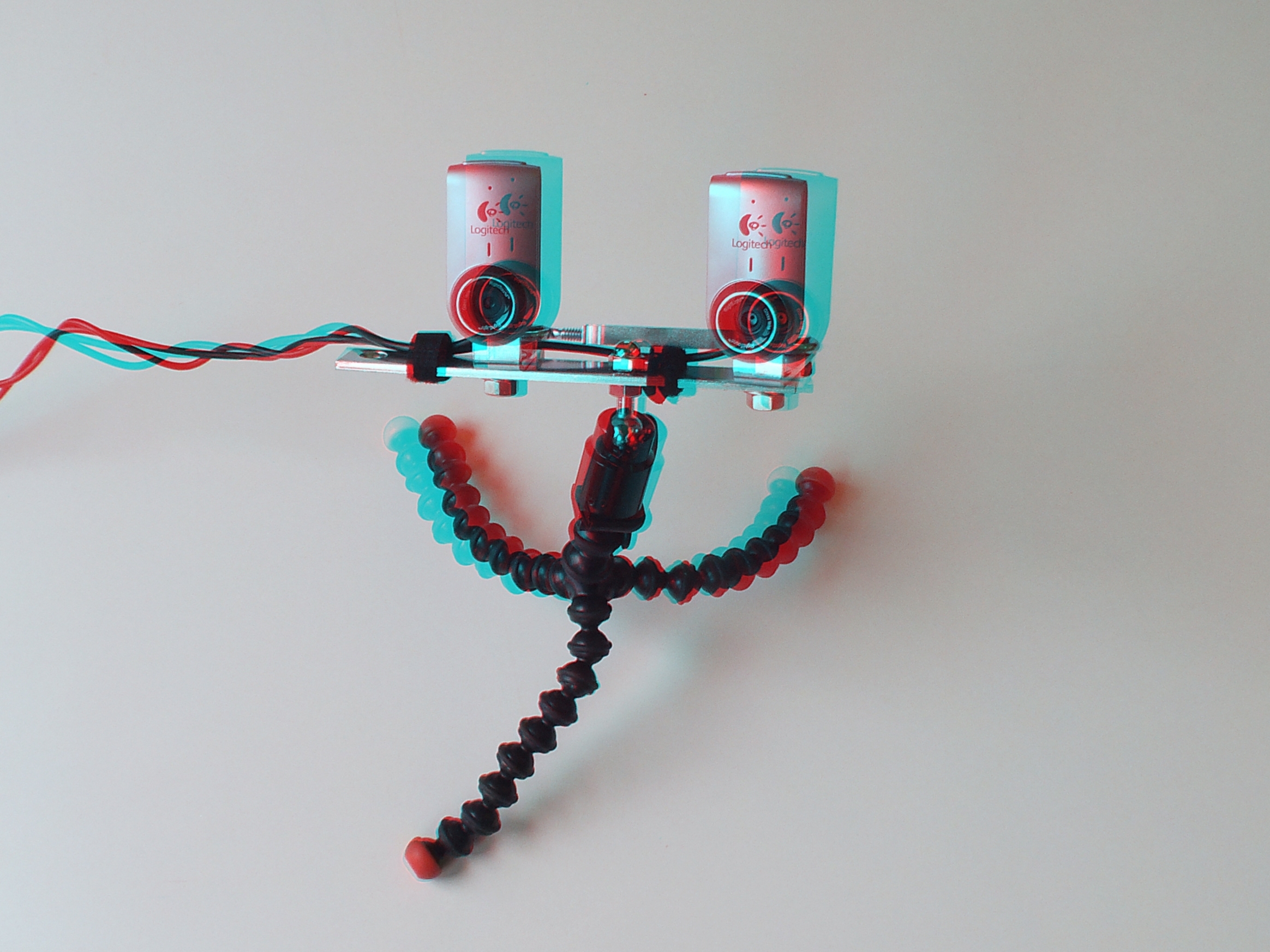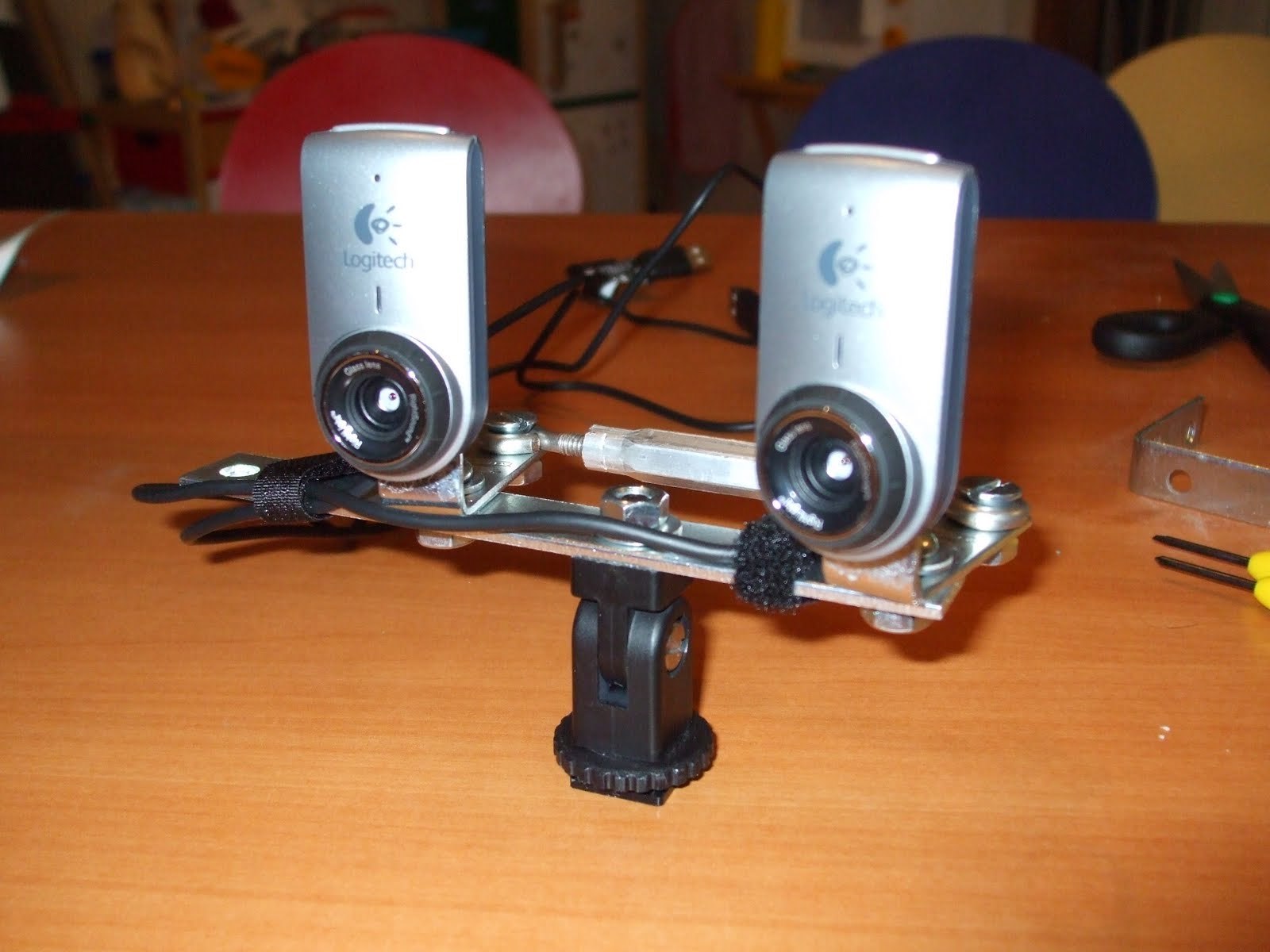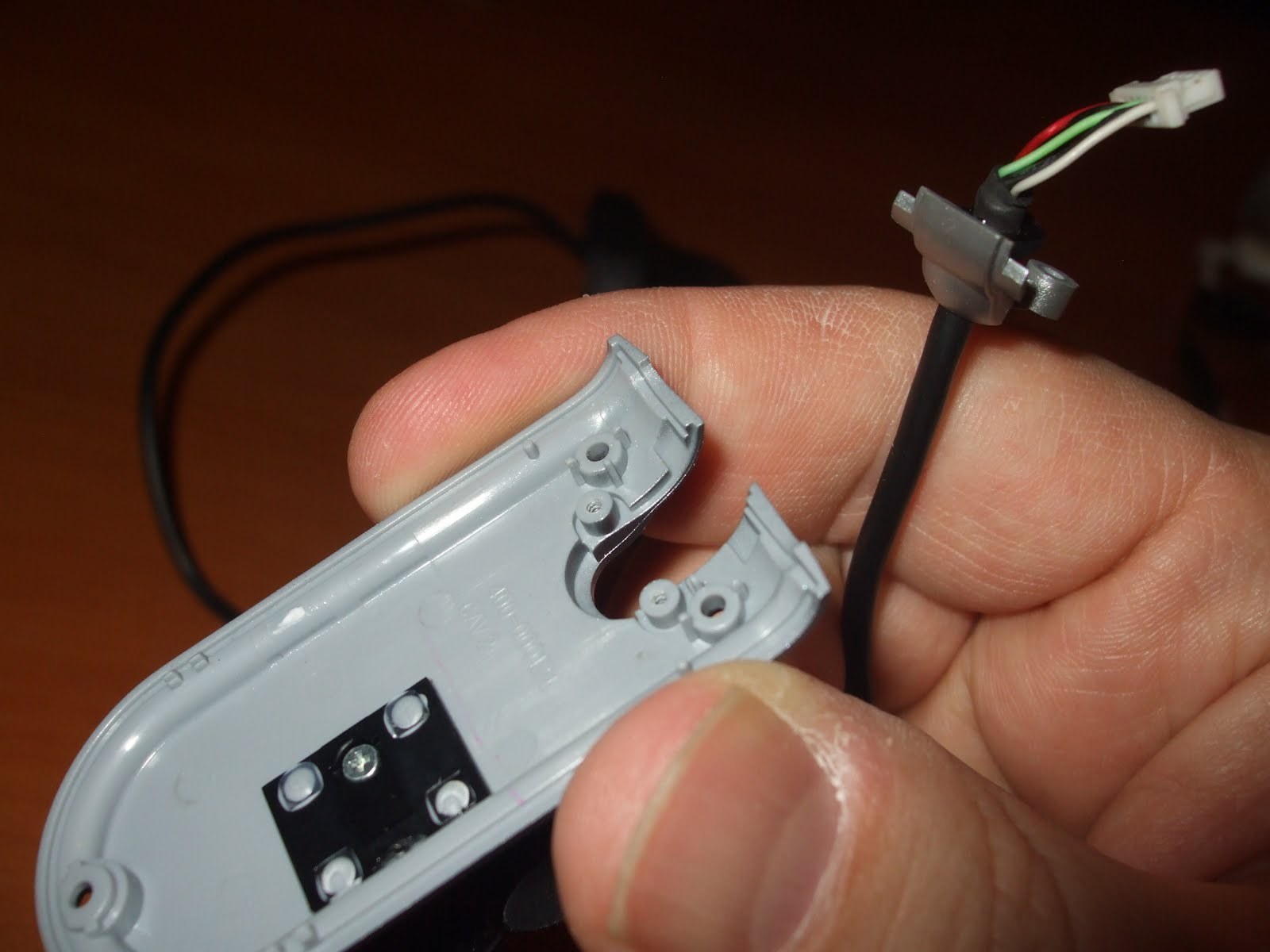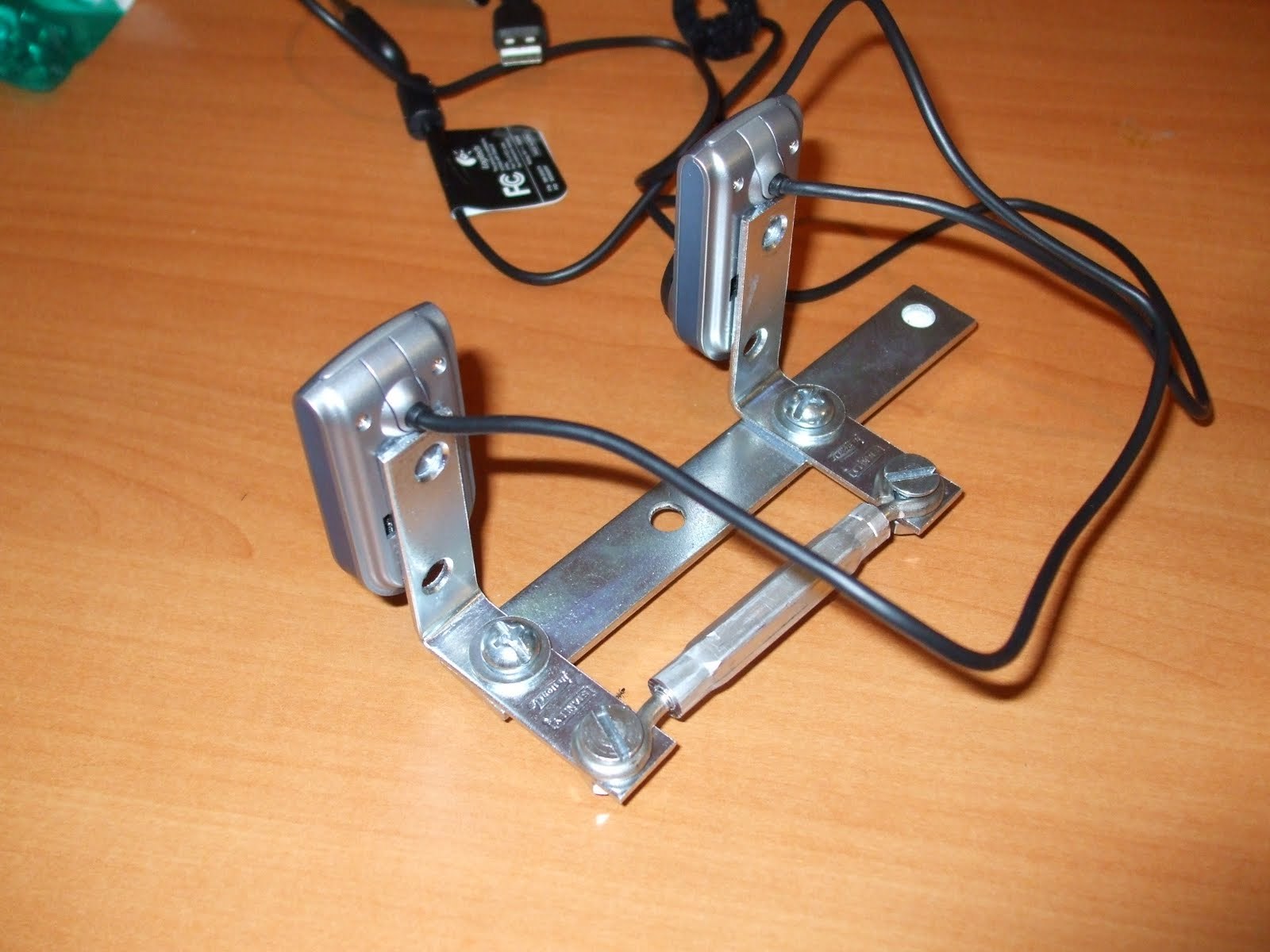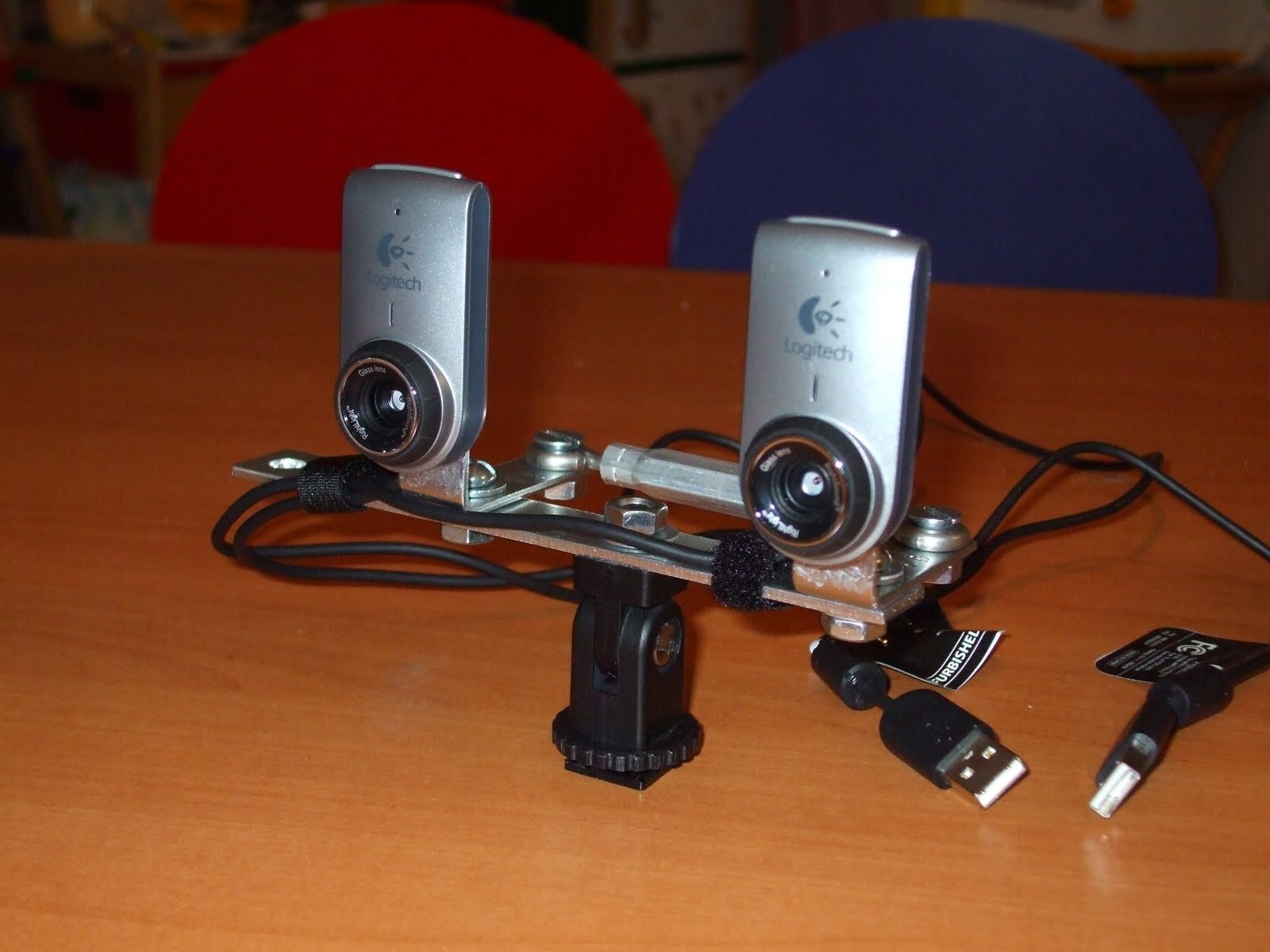3D video camcorders and displays are getting cheaper, but they’re still fairly expensive, and the only sub-$100 cameras that take 3D still photos all use roll film. So I thought it would be fun to mix the old with the new and see how cheaply I could build a digital camera rig for creating old-school red-blue 3D stills and video.
My design goals included real-time preview ability, focus and parallax control, and perhaps most importantly, compatibility with my daughter’s Barbie and the Magic of Pegasus 3D glasses.
Good old red-blue anaglyphic 3D works on ordinary screens, can be printed using any color printer, and requires only super-cheap glasses for viewing. You can’t do all that with the polarization-based 3D that movies use today. And there’s free, easy-to-use software that lets you create anaglyphic 3D from stills and video captured with ordinary digital cameras. Looking at 3D is fun, and it’s even more fun when you’ve shot it yourself.


